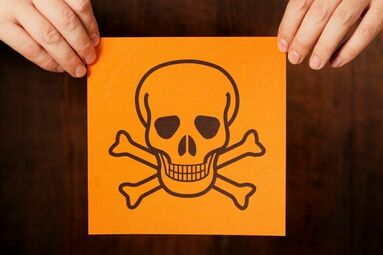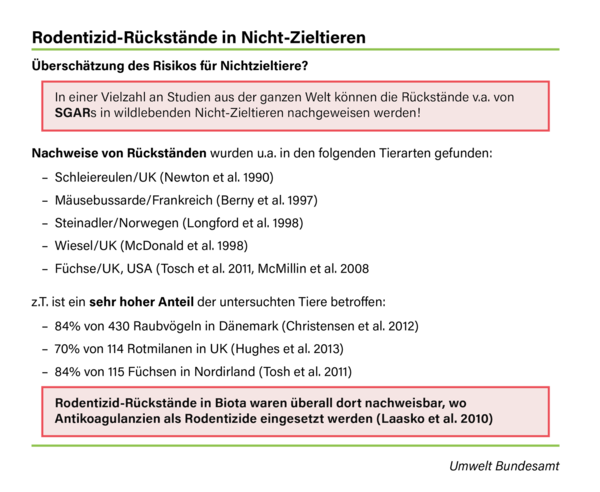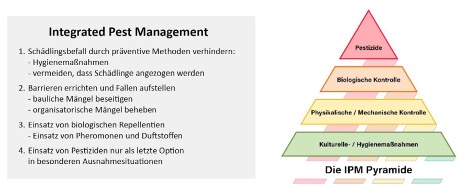RODENTICIDES AGAINST RATS AND MICE - THE DANGER FROM POISONS, MODERN ALTERNATIVES
- Verfasst von Daniel Schröer
- 6 min. Lesezeit
- Pest Control

Toxic baits are still part of the basic equipment of most pest controllers today. However, their use is being increasingly restricted by legal requirements. Also in audits according to IFS Food, BRC, AIB, retailer audits and especially in sustainability standards, concepts such as HACCP and IPM are used as a basis for evaluation and their implementation is assumed. As a consequence, pest controllers have to rethink – at least if they want to work as service providers for large and well-known companies.
In this article, we provide information on the background to the legal changes of recent years – the significance of environmental damage and secondary poisoning. Likewise, we address modern alternatives to rat and mouse control with rodenticides so that you are well prepared for the future of rodent control.
HOW EXACTLY DO RODENTICIDES WORK AS RAT AND MOUSE POISONS AND WHY ARE THEY SO DANGEROUS?
The active ingredients in rodenticides are so-called anticoagulants, i.e. blood-clotting inhibitors. After ingestion, poisoned rodents bleed to death internally within approximately two to five days. During this time they are weak, unable to move properly and are easy prey for their natural enemies such as foxes and birds of prey.
The active ingredients of rodenticides are:
- persistent (P)
- bioaccumulative (B)
- and toxic (T).
Such so-called PBT substances degrade very poorly in the environment, can accumulate in living organisms and are toxic. These properties also explain why they cause poisoning in other animals and are so harmful to the environment.

RODENTICIDES CAUSE SECONDARY POISONING AND POISON NON-TARGET ANIMALS

When rodenticides (with anticoagulants) are used, there is a risk that not only rats and mice, but also other animals that are not the target of control (non-target animals), will eat from the poison baits and thus be unintentionally poisoned. Bait for rats in sewers, for example, can be found and consumed by dogs.
In addition, poisoned rodents are easy prey for birds of prey such as buzzards and owls and cause second-degree poisoning (secondary poisoning) in them. Fish are also affected, absorbing the toxin through the water in which they live. Significant amounts of the active ingredient have already been detected in birds of prey, red kites and foxes:
For example, did you know that several thousand tons of rodenticide baits are applied in Germany every year? These are primarily for rat control in the sewer system. However, how much of these toxins actually ends up in the stomachs of rodents, how much is washed away and how much is ingested by other animals is completely unclear.
Secondary poisoning is particularly devastating when it weakens a pest’s natural enemies and decimates them in numbers. The pest then has a better chance to spread and an infestation is all the more likely. More poison is laid out again and the vicious circle continues to turn.
This also explains why authorities such as the Federal Environmental Offices in Germany and Europe have to restrict the use of rodenticides more and more. As a result, service providers and companies are being urged more and more strictly to rely on alternatives. But what do they actually look like exactly?
RODENTICIDES IN LEGISLATION AND STANDARDS
Rodenticides may no longer be used for permanent baiting according to the Biocide Regulation 528/2012. This means that rodents must not be constantly and preventively controlled with poisons.
The Federal Environment Agency also makes the following comments in a 2018 publication:
“Anticoagulants [this is the chemical name of rodenticides, editor’s note] may cause pain and animal suffering by inducing internal bleeding. Their use is also justifiable for this reason only if all conceivable measures have been taken beforehand to contain the rodent infestation and there is no alternative to biocide use. “
In addition, DIN 10523 provides rough guidance on the correct procedure for pest control:
- Prevention ? Keeping pests away, repelling them, depriving them of their livelihood, detecting an infestation at an early stage
- Infestation detection ? Determine infestation locations, infestation spread, infestation severity, infestation type.
- Combat ? Measures to eradicate the infestation [mit Hinblick auf die Richtlinie des Umweltbundesamtes zunächst mit allen erdenklichen Maßnahmen abgesehen von Giften]
- Documentation ? Accountability, resources, content, trend analyses, effectiveness reports.
And the IPM and HACCP principles, like DIN 20523, also require a preventive approach to pest control. Poisons are acceptable only as a last resort, if at all, when all other alternatives have been exhausted.

ALTERNATIVES AND PREVENTIVE MEASURES FOR POISON-FREE PEST CONTROL
As mentioned above, prevention and monitoring precede the control of an acute infestation. If pests have no way to penetrate your premises and are additionally deprived of their livelihoods, there is also no infestation that needs to be controlled. And if a rat or mouse does make it into the warehouse (for example, via a supplier’s pallet), the goal is to identify it quickly and take immediate poison-free action.
By hygiene measures one understands quite concretely for example:
- Storage concepts that ensure that goods do not remain on the shelves for too long
- Fast destruction of discarded goods
- regular thorough cleaning
- Orderly workflows that keep the environment clean
Structural measures describe the sealing of doors, windows, gullies, pipe penetrations, etc.
After these basic preventive measures, digital pest control comes into play. By using digital impact traps, poison-free monitoring baits and cameras for infestation detection, rats and mice can be kept in check without any problems and completely free of poison. Even though digital pest control has been around for over 10 years, it is still new to many.
In our article on digital pest control, we provide detailed information on the modern solutions that transform a pest controller from a “box opener” to a consulting service provider.
Natural and biological methods, such as building perches for raptors on a site, are also promising alternatives to the use of poisons. “Back to the future” is the motto here, because natural methods were already known to our grandparents. To learn how pest control is rediscovering and evolving them today, see our article on biological and ecological pest control.
SUMMARY
Rodenticides containing anticoagulants pose a significant risk to animals and the environment – and ultimately to humans. While digital alternatives have been around for a long time, they gained prominence in recent years under pressure from new laws and policies. Already today, the use of rodenticides is highly regulated. Pest controllers who bring modern alternatives to their customers position themselves as valuable long-term consulting service providers. So you, too, will benefit from a quick rethink.


